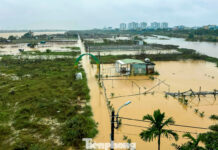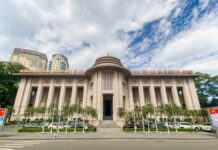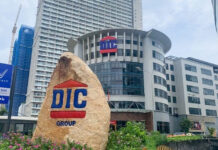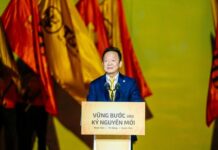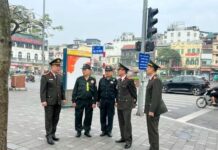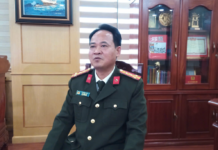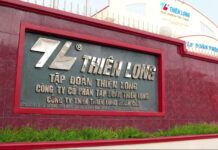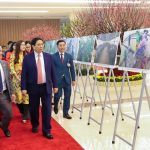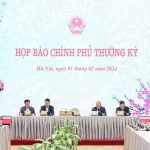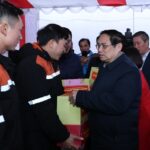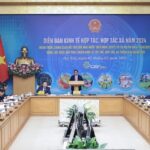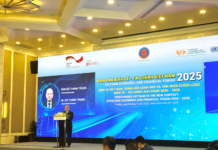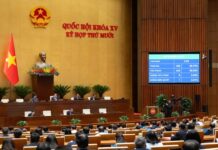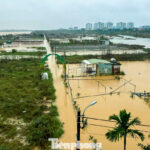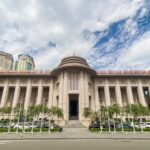The inauguration ceremony was held in a hybrid format with the main venue located at the 500 kV Pho Noi substation, connecting online to 9 other venues in the 9 provinces through which the project passes. Attending the inauguration ceremony at the main venue in Hung Yen province were Prime Minister Pham Minh Chinh, Chairman of the Vietnam Fatherland Front Central Committee Do Van Chien, and Head of the Party Central Committee’s Economic Commission Tran Luu Quang.
Vice Prime Minister Tran Hong Ha attended the ceremony at the Thai Binh province venue; Vice Prime Minister Le Thanh Long at the Thanh Hoa province venue; and Vice Prime Minister Ho Duc Phoc at the Ha Tinh province venue.
The event was also attended by leaders of central ministries, provincial Party Committees, People’s Committees, and People’s Councils, as well as local authorities from the provinces of Quang Binh, Ha Tinh, Nghe An, Thanh Hoa, Ninh Binh, Nam Dinh, Thai Binh, Hai Duong, and Hung Yen. Leaders from Vietnam Electricity (EVN) and the National Power Transmission Corporation (EVNNPT), along with representatives from central and local press agencies, and local residents along the power line route were also present.
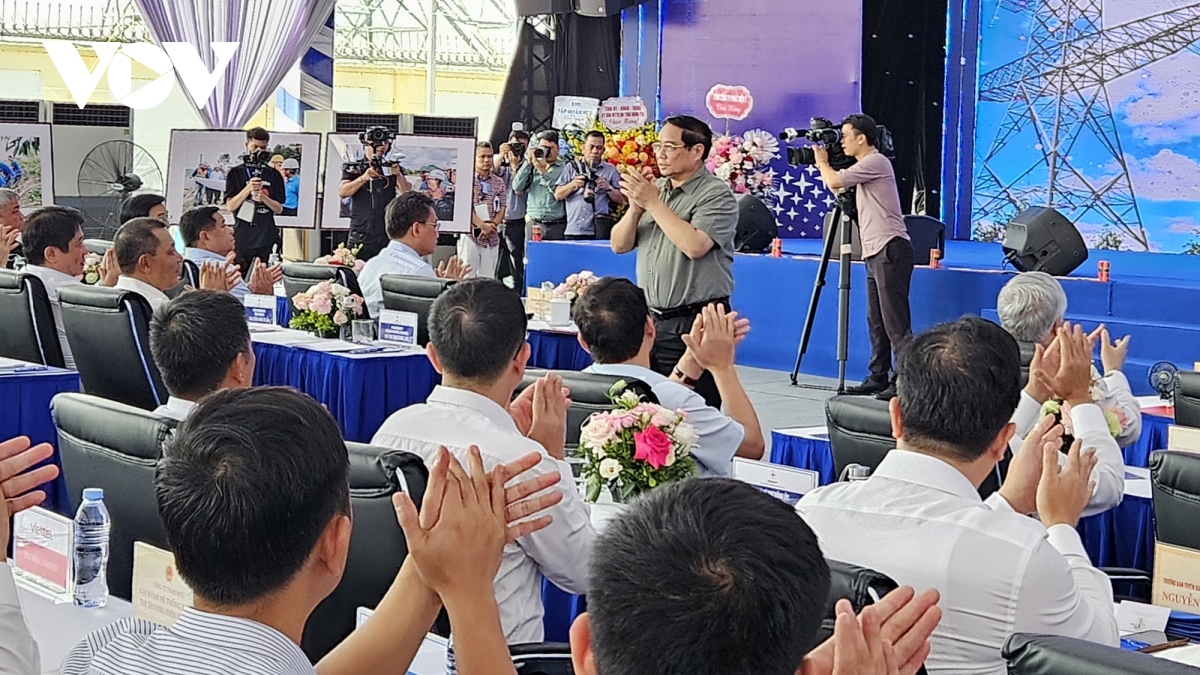
Prime Minister Pham Minh Chinh attends the inauguration ceremony of the 500 kV Quang Trach – Pho Noi Project
The 500 kV Quang Trach – Pho Noi Project is a large-scale project with a total length of 519 km, consisting of 2 circuits with 1,177 tower positions, and a total investment of over VND 22,300 billion (nearly USD 1 billion). The project involved excavation of over 2,500,000 cubic meters of earth and rocks, used more than 705,000 cubic meters of concrete, nearly 70,000 tons of foundation steel, and a total of 139,000 tons of steel tower structures. Additionally, nearly 14,000 km of various types of conductor cables were pulled. This urgent and important project aims to enhance the transmission capacity of the 500 kV system from Central to Northern Vietnam, increasing it from 2,500 MW to 5,000 MW. It also improves the stability of the power system, boosts power supply to the North in 2025 and subsequent years, reduces the risk of overload for existing 500 kV lines and substations, and contributes to ensuring the country’s energy security.
The construction process faced several challenges, including the need for large-scale land compensation and clearance, affecting approximately 1.83 million square meters of land across 9 provinces. It also involved supporting and resettling 167 households that had to be relocated, as well as providing assistance to 5,248 affected households. Other challenges included the difficulty in mobilizing specialized machinery and equipment simultaneously along the entire route, as well as recruiting personnel with high technical expertise for tower construction and cable pulling. The project also navigated geographical obstacles, with many tower foundations located on steep hills and mountains, making access difficult, especially during rainy seasons when the roads became slippery. Construction took place during unfavorable weather conditions, ranging from cold and rainy days to extreme heat waves and storms, with frequent lightning and strong winds that often halted work for several hours to ensure the safety of the workers and equipment. Lastly, there was a challenge in supplying the large quantity of steel towers within the tight project schedule.
Since the beginning of its development, the 500 kV Quang Trach – Pho Noi Project has received strong attention and direction from the entire political system, especially the Government and Prime Minister. With a new approach and methodology compared to previous projects, the project timeline was significantly shortened, meeting the progress requirements set by the Prime Minister. This achievement is unprecedented for 500 kV power line construction projects.
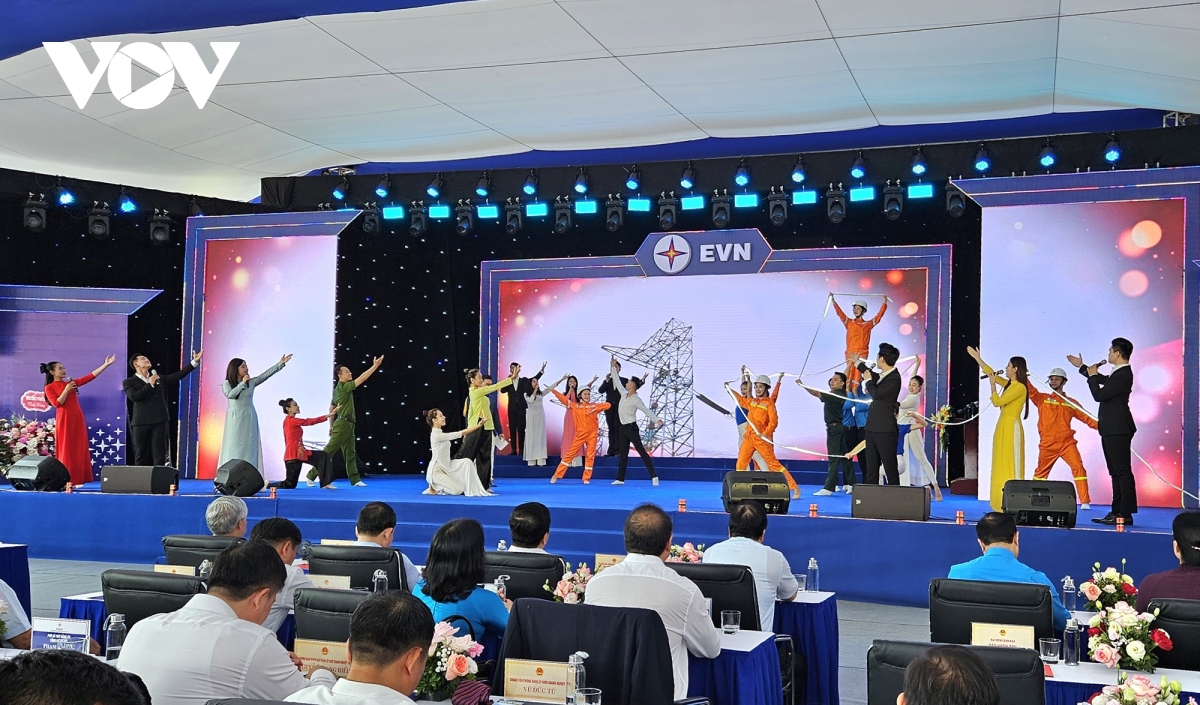
Prime Minister Pham Minh Chinh attends the inauguration ceremony of the 500 kV Quang Trach – Pho Noi Project, held in a hybrid format
Typically, projects of similar scale and complexity would take 3 to 4 years to complete. For instance, the 500 kV Pleiku – My Phuoc – Cau Bong line, measuring 437 km in length, took nearly 3 years to construct, while the 500 kV Vung Ang – Quang Trach – Doc Soi – Pleiku 2 line, spanning 740 km, required almost 4 years. However, the 500 kV Quang Trach – Pho Noi Project was completed in just over 6 months. In terms of structure, the project required the erection of 139,000 tons of steel towers, more than double the amount used in the 500 kV North-South Project’s first circuit, which used 60,000 tons of steel.
Following the Prime Minister’s instructions, the provincial Party Committees and People’s Committees actively implemented the “4-on-site” principle, with EVN/EVNNPT coordinating with local authorities to mobilize local human resources, machinery, vehicles, and materials, thereby accelerating the progress of foundation excavation and construction.
For the tower erection and cable pulling work, various agencies and units provided significant support to EVN, EVNNPT, and the contractors in terms of human resources. Specifically, the power sector deployed an additional 3,300 personnel for tower erection and cable pulling; Viettel, VNPT, and PVN collectively contributed nearly 250 personnel; the local military and police forces, including Military Zone 3, Military Zone 4, and the self-defense militia, mobilized over 1,500 personnel, contributing thousands of workdays to the project; and Vietnam Railways timely transported nearly 1,000 containers of imported equipment and materials for the project.
Furthermore, the provincial Youth Unions mobilized hundreds of teams with over 6,000 members to assist in cleaning houses and structures along the route, as well as managing traffic flow. The Fatherland Front, Labor Unions, and Women’s Unions regularly visited and encouraged the workers, actively participated in logistical support, and ensured sufficient food and provisions for the engineers and workers involved in the project. Additionally, local authorities and police maintained security and order at the construction sites and arranged accommodations for the workers, contributing significantly to the project’s accelerated progress.
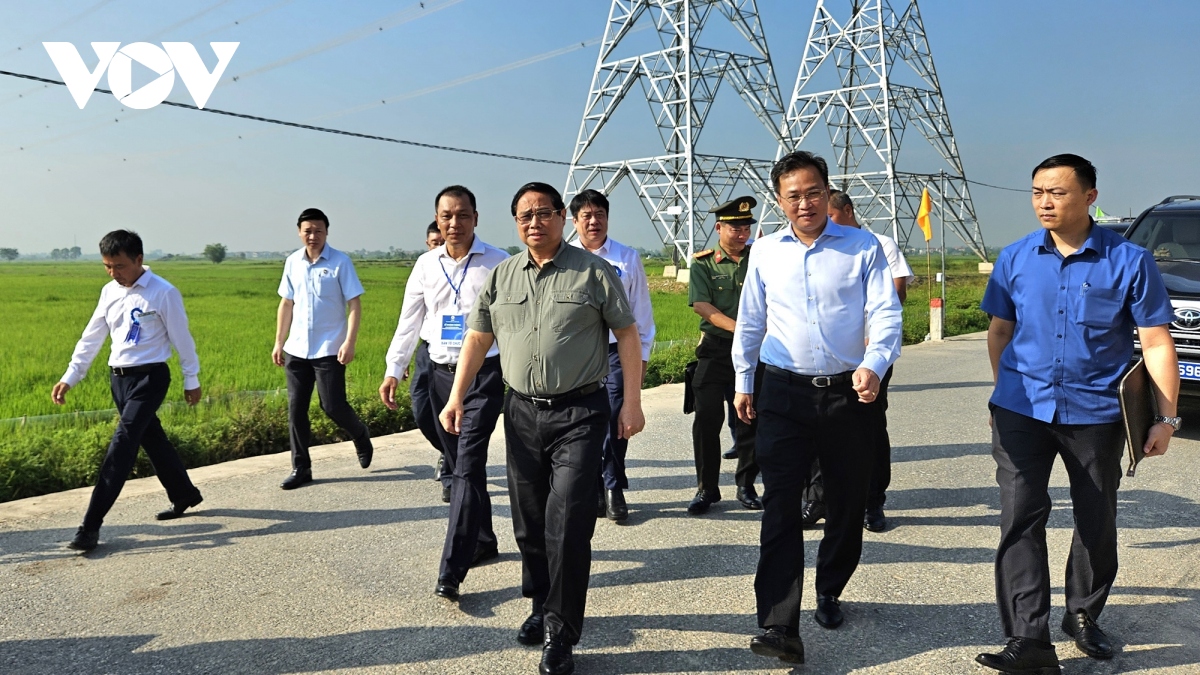
The 500 kV Quang Trach – Pho Noi Project received strong attention and direction from the entire political system, especially the Government and Prime Minister.
Central and local press agencies played a crucial role in disseminating timely news, articles, and reports, showcasing the dedication and hard work of the engineers and workers on the construction site. They also served as a source of encouragement and inspiration for the entire team. Notably, the practical articles and images from the construction site were vivid testaments to the collective strength and unity of the political system and the great national unity, with the participation and support of numerous forces and social organizations in the localities.
During various progress review meetings, on-site inspections, and through his constant encouragement, Prime Minister Pham Minh Chinh commended the leaders of ministries, sectors, and localities, as well as political and social organizations, EVN, EVNNPT, consulting units, material and equipment suppliers, and construction units, for their spirit of “overcoming the sun, winning against the rain, and not yielding to storms”, “only discussing how to do, not how to retreat”, “working during the day is not enough, we must work at night”, “eating in a hurry, sleeping urgently”, working continuously 24/7, in “3 shifts, 4 groups”, and “working through holidays and Tet”. Thanks to these efforts, the project was successfully completed and put into operation, meeting the requirements set by the Prime Minister.
The completion of the 500 kV Quang Trach – Pho Noi line marks the fourth 500 kV North-South power line in Vietnam, playing a crucial role in ensuring energy security, promoting socio-economic development, and strengthening national defense and security. The successful overcoming of numerous challenges and the timely completion of this project is a matter of great honor and pride, serving as a practical activity to celebrate the 79th anniversary of the August Revolution and National Day (September 2) and the 70th anniversary of the traditional day of the Vietnam Electricity Industry (December 21, 1954 – December 21, 2024).
Prime Minister demands thorough inspection so that everyone can have Tet
Prime Minister Pham Minh Chinh emphasized the importance of ensuring a safe and joyful Lunar New Year for all citizens. Local authorities and organizations are responsible for making sure that everyone can celebrate the holiday in a healthy, efficient, and inclusive manner, ensuring that no one is left behind and that everyone can enjoy the Lunar New Year festivities.
Prime Minister: Collective economic development is an inevitable trend in the context of international integration.
According to the Prime Minister, collective economic development is an essential trend in the context of international integration, aligning with Vietnam’s socialist-oriented market economy. Collective economic organizations operate with a primary focus on economic benefits while also valuing political, cultural, and social benefits within the local area.

